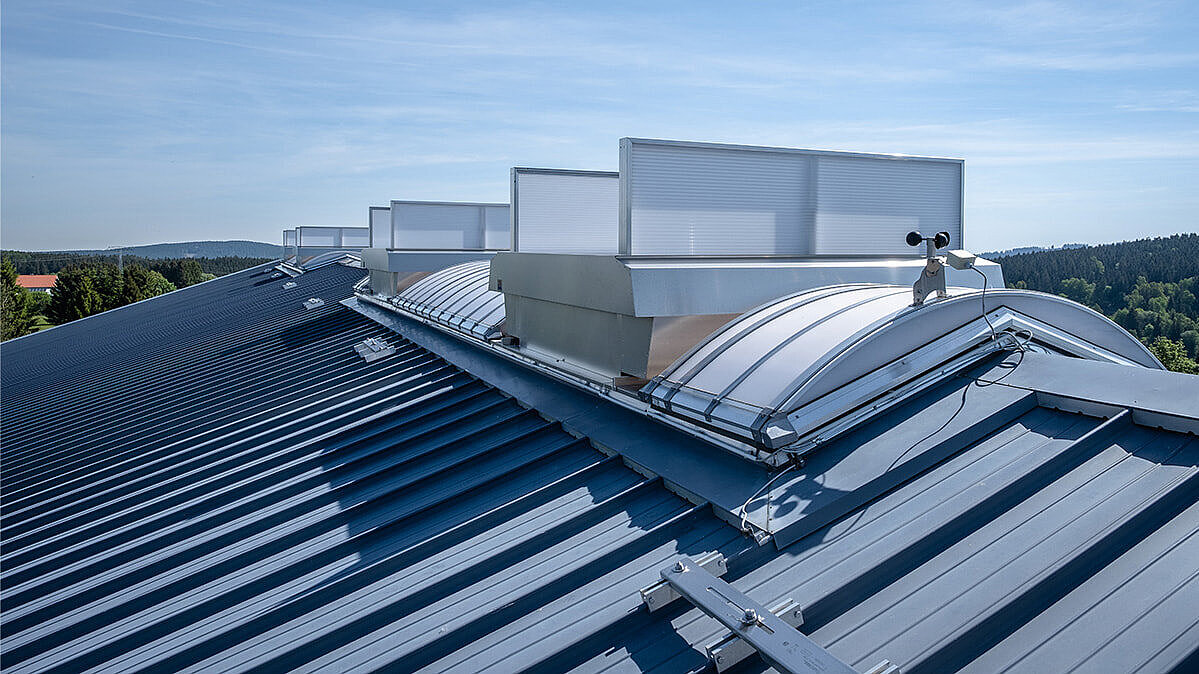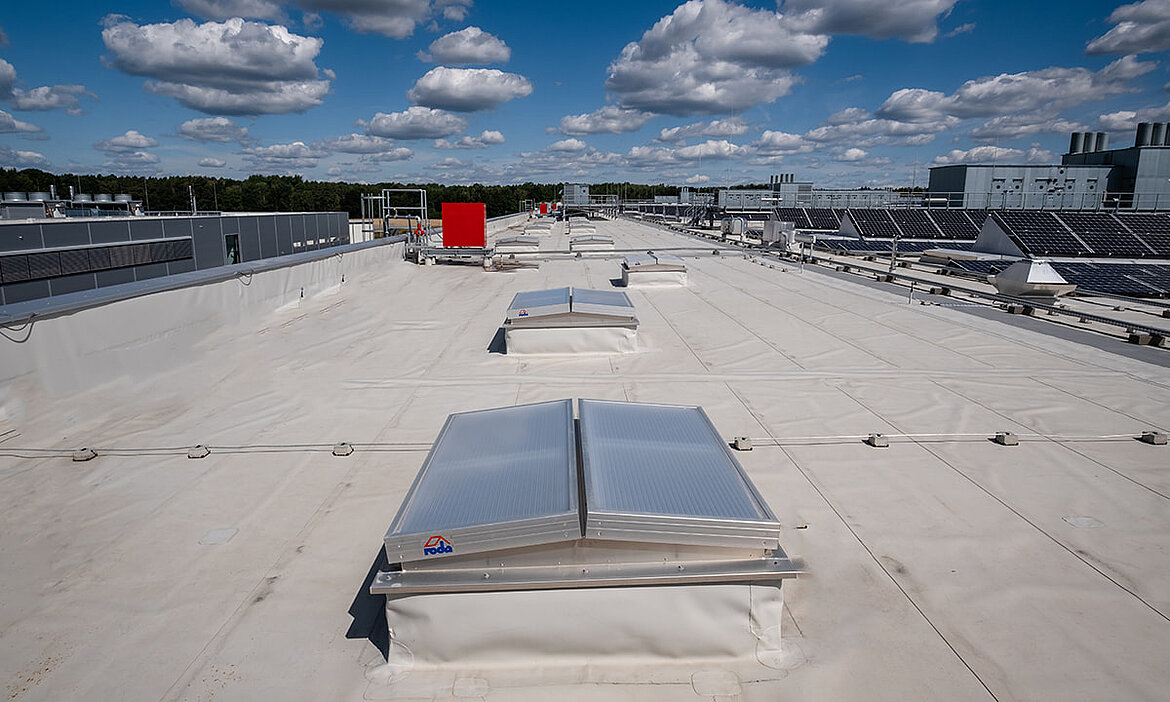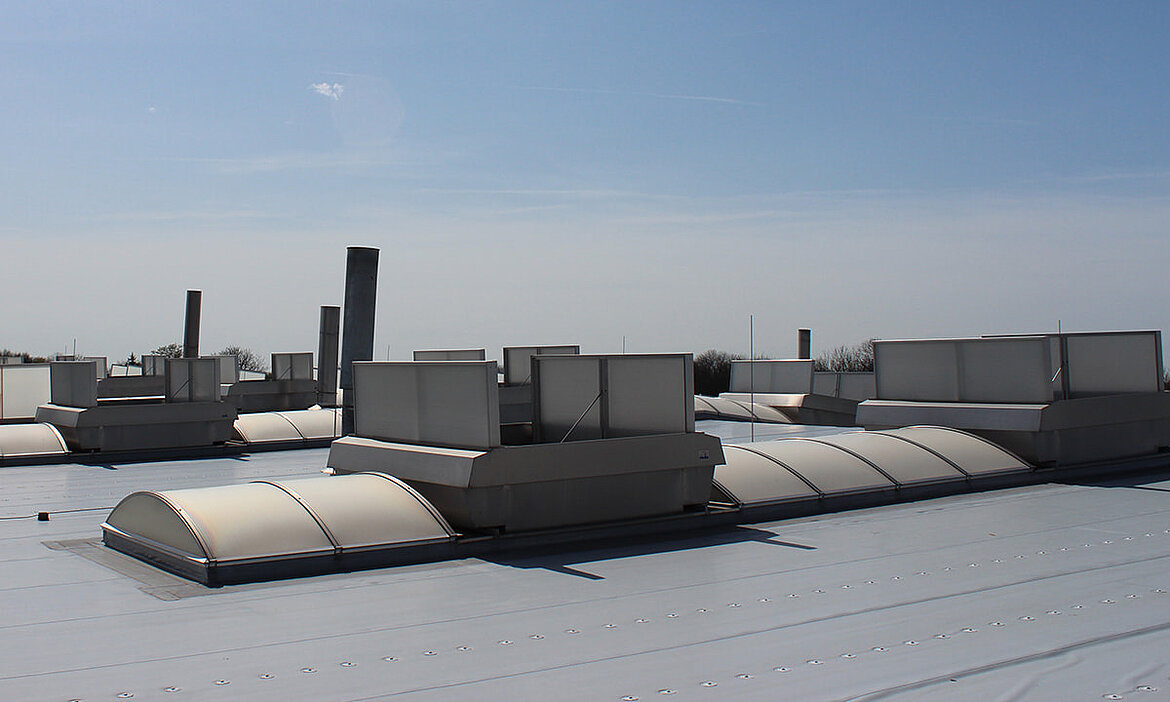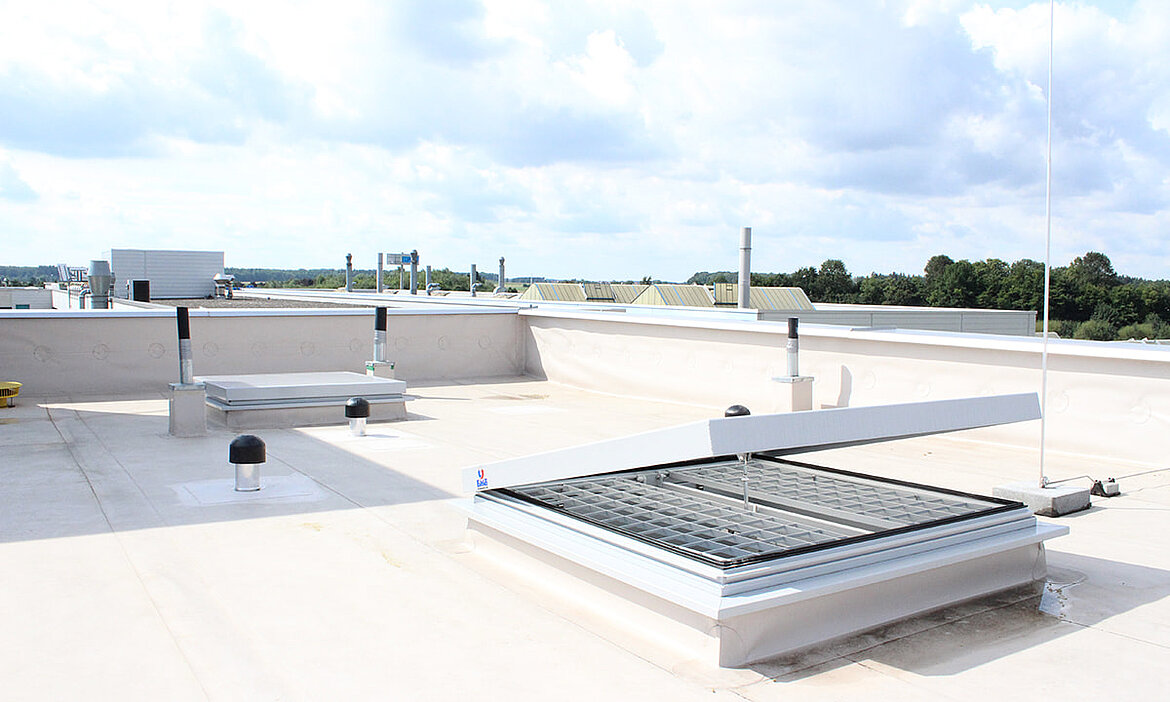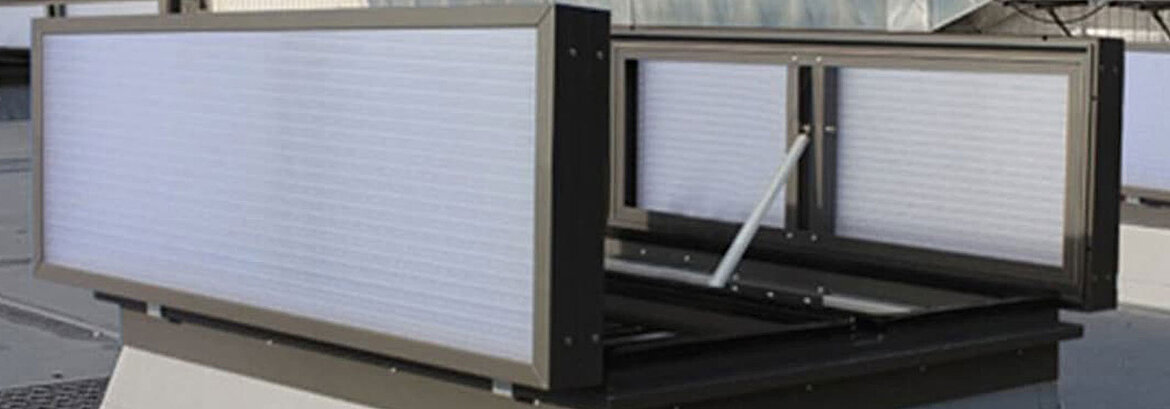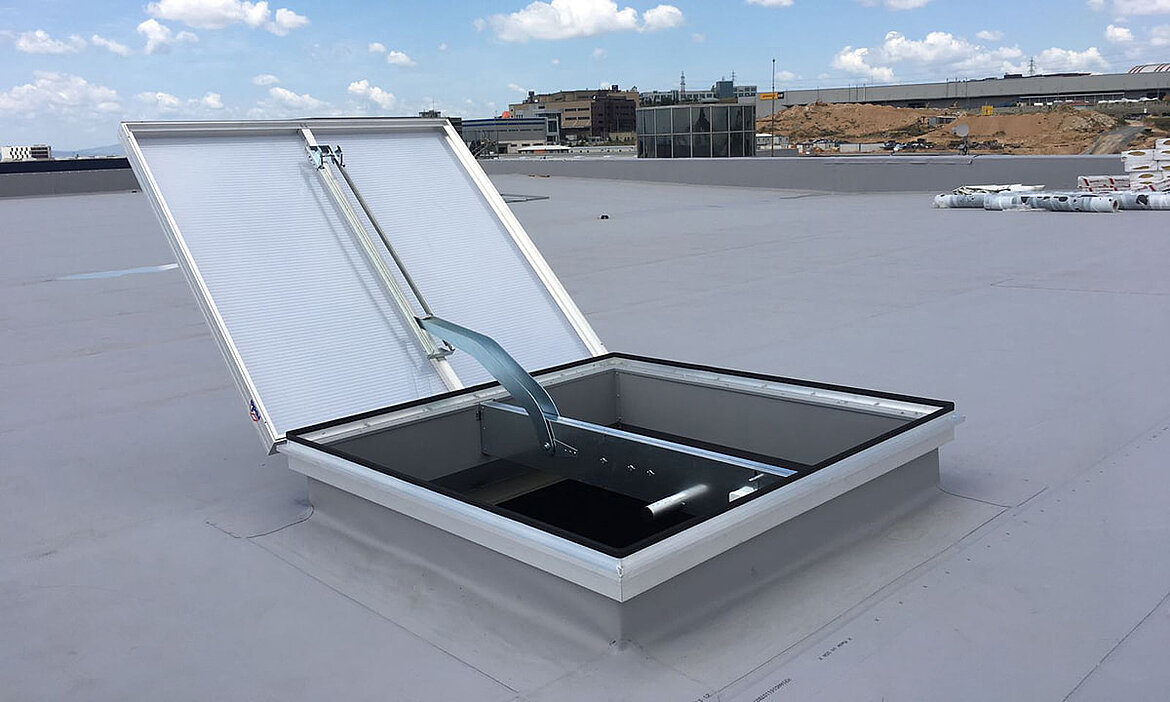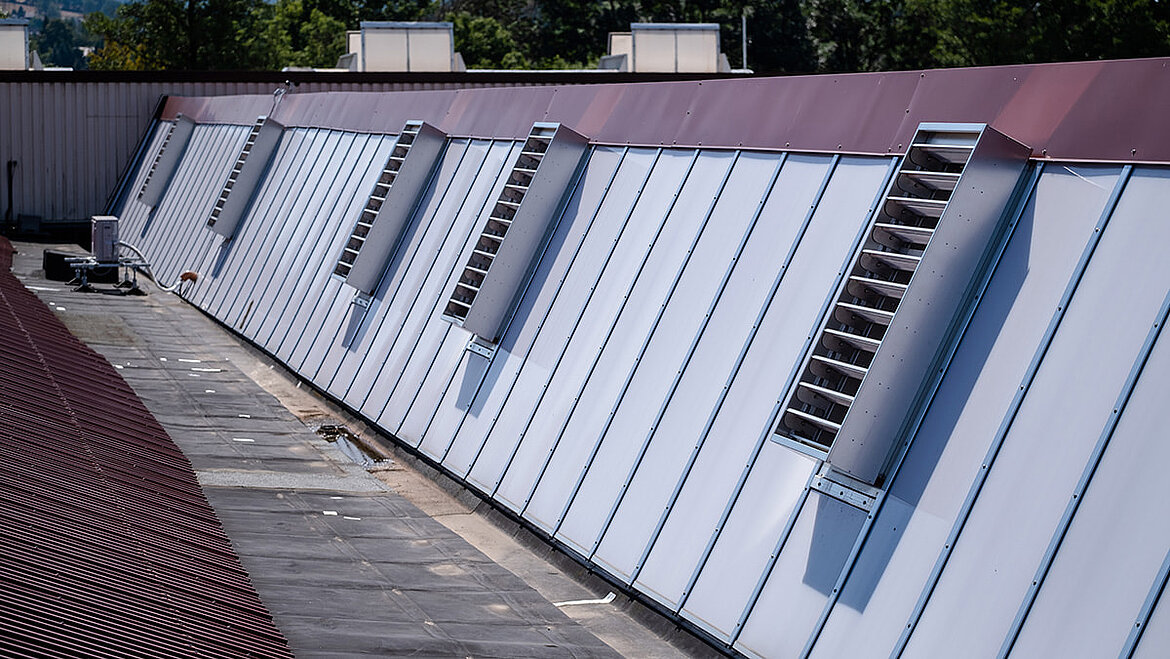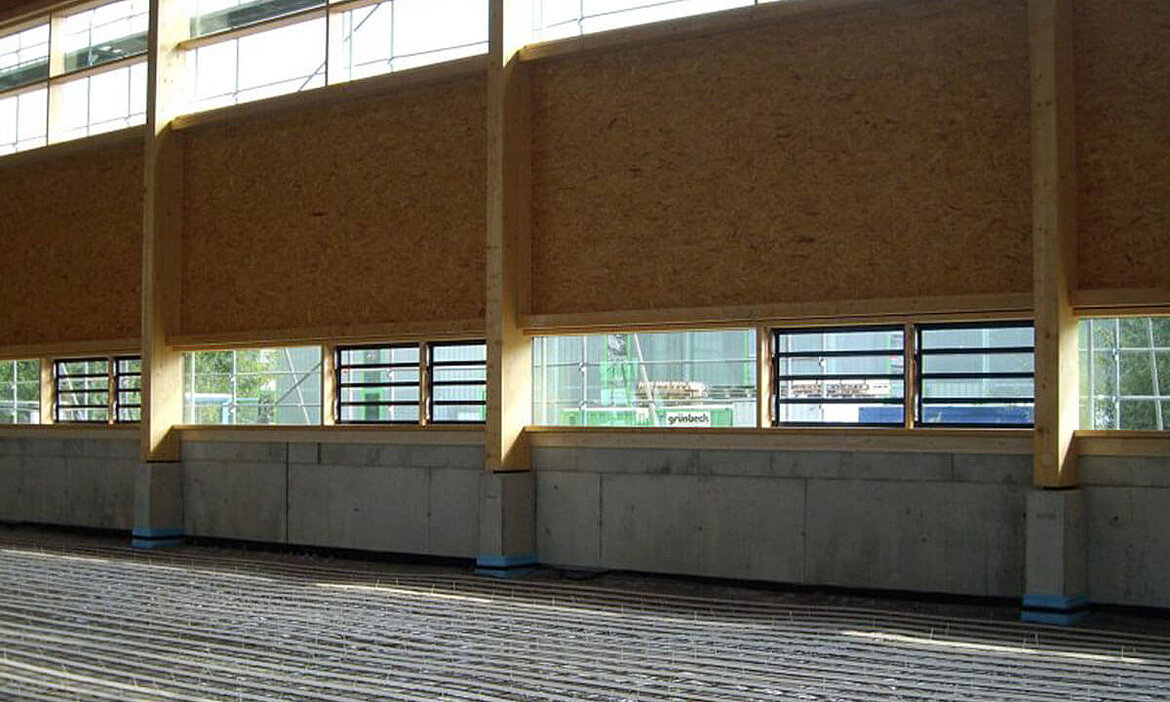Smoke and heat exhaust ventilation units
Fire protection safety through SHEV
The German Building Code provides the legal framework for preventive technical fire protection in Germany. This sets out the exact legal regulations in the building codes and special building regulations of the federal states.
Smoke and heat exhaust ventilation systems are part of the preventive fire protection measures as technical fire protection equipment. The smoke and heat exhaust ventilation system (SHEV system for short) is intended to route heat and warmth as well as fire and smoke gases into the open.
SHEV system safety objectives
The qualified smoke extraction ensures that the toxic fire smoke does not spread unhindered. Fire smoke would otherwise block escape routes or make it difficult for emergency and rescue services to access the building. At the same time, locating the source of the fire within the building is facilitated for the fire brigade's firefighting attempt. In this context, it is important to know that most fire deaths are caused by smoke poisoning.
The heat exhaust reduces the temperature in the building by discharging the hot smoke gases. This reduces the thermal load on statically supporting building parts and the entire building fabric.
Perfect interaction of all components
For a SHEV system to function smoothly and fulfil its function in the event of a fire, all components must be perfectly coordinated.
The components are essentially made up of the following:
- System control
Controls the function of the system components in case of fire. - Smoke extraction
A distinction is made between natural and mechanical smoke extraction systems. - Air replenishment
The air replenishment of the lower hall area can be done either naturally or mechanically. - Smoke curtains
These serve to separate the fire smoke sections.
Mechanical smoke/heat exhaust systems (MSE) or mechanical smoke and heat exhaust ventilation units (MSHEV) remove the smoke via ventilators. Natural smoke/heat exhaust ventilation units (NSHEVs), on the other hand, use simple but highly effective physical principles.
SHEV can save lives
Construction planners and building managers of new buildings and renovations scrupulously ensure that there are sufficient options for natural smoke and heat ventilation. However, to ensure that the SHEV systems are able to guarantee lasting safety, they need to be regularly maintained. Building operators must not only prove the functional safety of SHEV systems to the legislator, but also guarantee it in good conscience to the people who spend time in their buildings. In addition, this also reduces economic risks for the operator.
Why regular SHEV maintenance is important:
- Longer service life for the SHEV system
- Compliance with legal requirements
- Insurance cover remains in force in the event of a fire
- Reduction of repair effort
Roda as a problem solver
Since SHEV systems are intended to save lives in an emergency, there must be no compromises when it comes to functional efficiency. Roda stands for high-quality, certified SHEV systems that guarantee functional reliability even after years of daily use. Our systems set standards for important performance data such as wind and snow load values. Thanks to their high quality, our SHEV units can also be used for daily ventilation. All our SHEV systems are tested for a wide range of installation situations in accordance with the requirements of DIN EN 12101-2 and VdS 2159.
In addition, we offer you manufacturer-independent maintenance and, at the same time, guarantee repair with original spare parts if necessary. We guarantee the functionality of your SHEV systems and document this in our maintenance protocols.
But false activations can also quickly cause considerable damage, for example in the event of rain. Our well-developed network of technicians guarantees that we can be at your site quickly in emergencies.
Our Smoke and heat exhaust ventilation units
Get to know our products better

